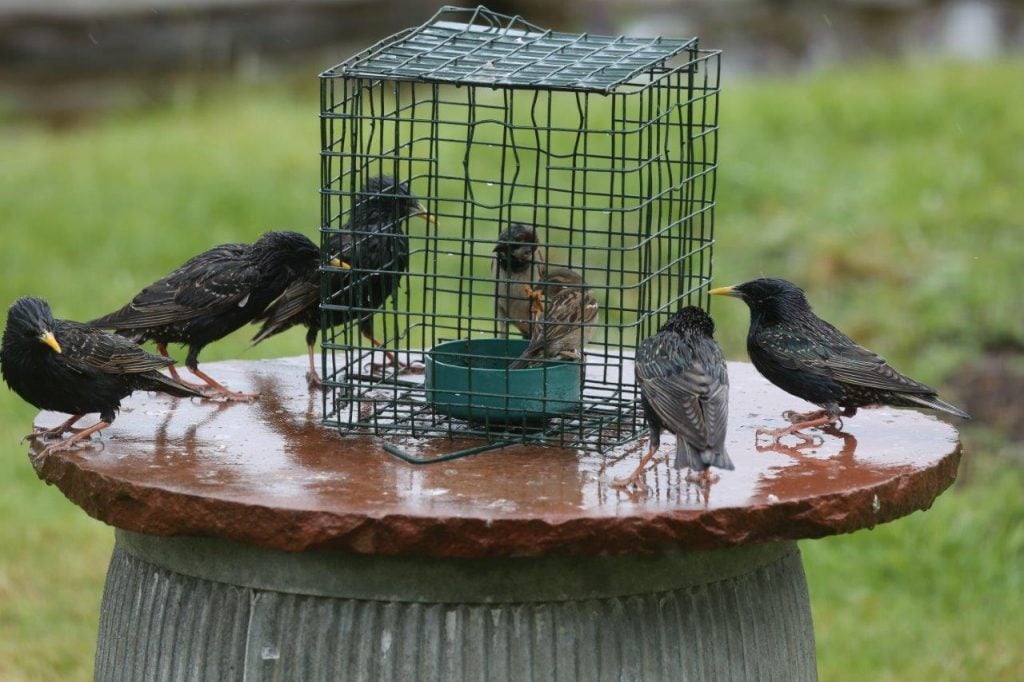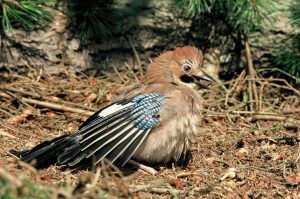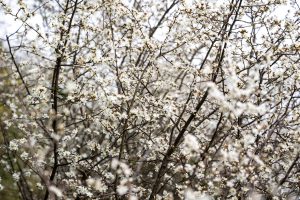Early Spring feeding for the birds in our gardens
For the birds we attract to our gardens, early Spring is actually a time where natural food is especially hard to find – and in particular if there’s a cold snap. The main reasons are that cold weather will keep worms well below the ground’s surface; other invertebrates, and notably insects will not all be out of hibernation or be active enough to be easily found, plus the previous year’s fruit and seed will have long been eaten. There will be buds and shoots which some species of garden bird will eat, but not all will.
Despite often low levels of available food, several garden bird species have already nested and are on eggs once into March – notably Blackbirds and Robins. This can create an interesting situation and lead to more competition for available food, because birds of the same species which have come from mainland northern Europe to winter here may well still be in your garden. So, in other words you could have a female Blackbird on eggs in your garden at the very same time as another Blackbird from Finland which has yet to make its journey home to breed.
It is therefore, more important than ever to ensure that the right foods are available and in the right feeders, and in the case of the ground feeding species, such as Blackbirds and Robins already mentioned, that means a bird table or ground feeding tray. Again for these two species, as they’re both ‘softbills’ and therefore can’t remove husks from seed, the ideal foods are Sunflower Hearts, husk-free mixes such as our Won’t Grow Mix, plus Suet Pellets. Live Mealworms are even better, as once the chicks have hatched in the nest this food provides not only protein but all-important moisture.
Other common bird species such as Blue Tit delay their breeding cycle, with most birds not on eggs until well into April. The reason for this is so that at a time when the young are hatched, it coincides with the emergence of caterpillars – the principle natural food that adult Blue Tits will feed to their young. However, unless you are in an area which is rich in native trees and notably oak, such supplies of caterpillar are likely to be hard for the Blue Tits to find – and the same applies to Great Tits. Again though, live mealworms are the perfect solution and most species of Tit will readily take them back to the nest, and of course take their own share to eat and keep energy levels up.
Despite often low levels of available food, several garden bird species have already nested and are on eggs once into March – notably Blackbirds and Robins. This can create an interesting situation and lead to more competition for available food, because birds of the same species which have come from mainland northern Europe to winter here may well still be in your garden. So, in other words you could have a female Blackbird on eggs in your garden at the very same time as another Blackbird from Finland which has yet to make its journey home to breed.
It is therefore, more important than ever to ensure that the right foods are available and in the right feeders, and in the case of the ground feeding species, such as Blackbirds and Robins already mentioned, that means a bird table or ground feeding tray. Again for these two species, as they’re both ‘softbills’ and therefore can’t remove husks from seed, the ideal foods are Sunflower Hearts, husk-free mixes such as our Won’t Grow Mix, plus Suet Pellets. Live Mealworms are even better, as once the chicks have hatched in the nest this food provides not only protein but all-important moisture.
Other common bird species such as Blue Tit delay their breeding cycle, with most birds not on eggs until well into April. The reason for this is so that at a time when the young are hatched, it coincides with the emergence of caterpillars – the principle natural food that adult Blue Tits will feed to their young. However, unless you are in an area which is rich in native trees and notably oak, such supplies of caterpillar are likely to be hard for the Blue Tits to find – and the same applies to Great Tits. Again though, live mealworms are the perfect solution and most species of Tit will readily take them back to the nest, and of course take their own share to eat and keep energy levels up.



